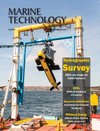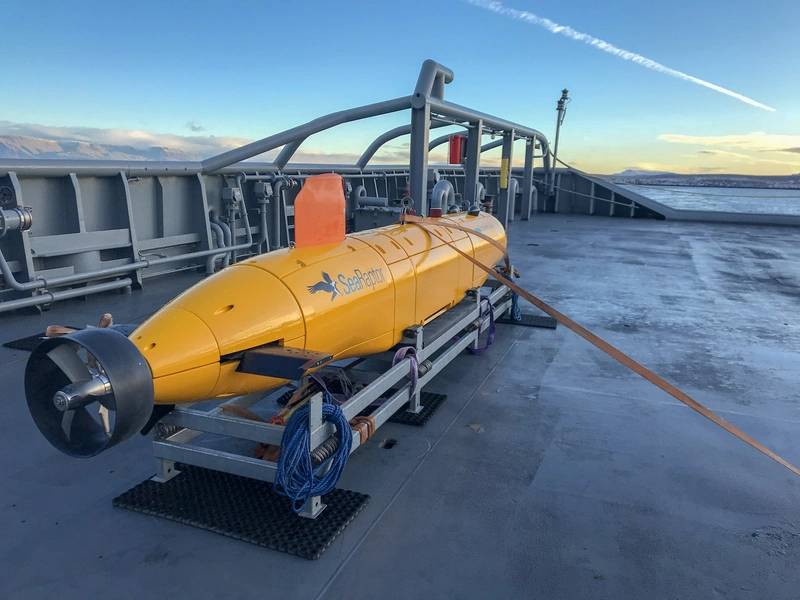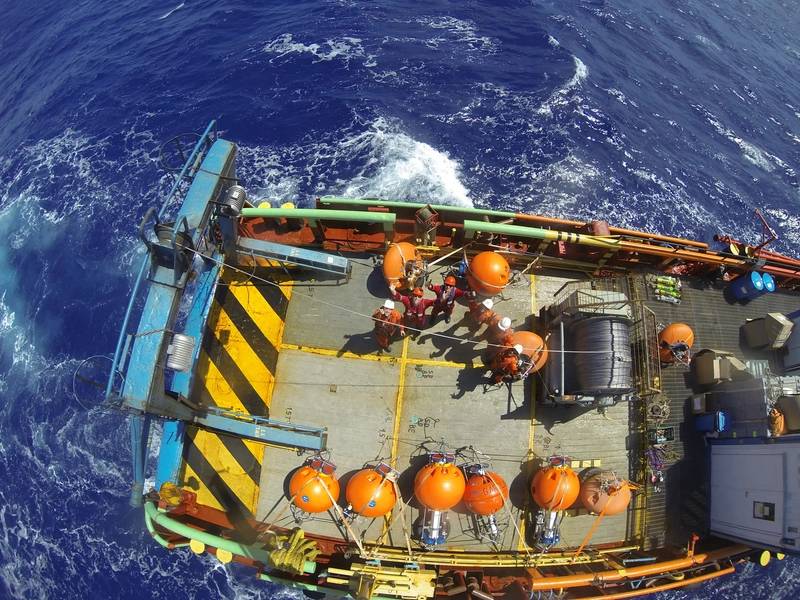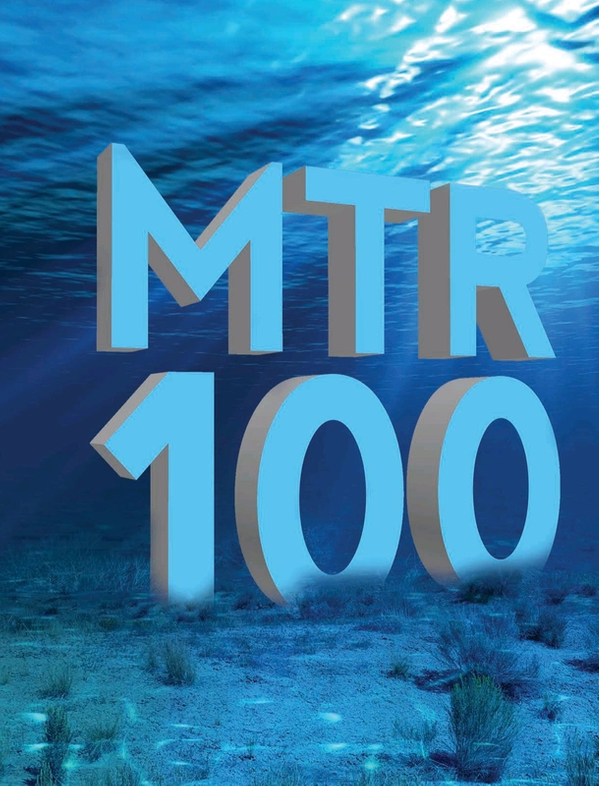
MTR100: Teledyne Marine
With 23 brands, and more than 400 marine products in its portfolio, Teledyne Marine collectively offers the largest breadth of technology in the industry. From tiny connectors to 6000m rated AUVs – and virtually everything in between – Teledyne is well positioned to solve subsea’s biggest challenges. Whether customers seek a single product, or a complex turnkey solution, Teledyne Marine has the vision and capability to deliver leading-edge technology to commercial, academic, and defense customers around the globe.
As the organization continues to grow and mature, and customer needs continue to evolve, particular focus has been placed on integrating Teledyne’s many sensors, sonars, connectors and vehicles to simplify and streamline customers’ technology sourcing, selection and system integration issues.
The following are several examples of how Teledyne’s technologies can be combined to solve industry challenges:
Increasing understanding of the ocean
In 2019, Teledyne Marine became a partner to the Nekton Deep Ocean Research Institute in support of First Descent, which was a series of exciting expeditions designed to explore and conserve the Indian Ocean. Teledyne Marine supplied a wide array of sensors and technology to empower Nekton’s manned submersible, ROVs, and surface vessel to collect critical data pivotal to this mission.
Equipment supplied by Teledyne Marine included:
• RESON SeaBat T50-P Extended Range multibeam echosounder and RD Instruments new next-gen 6000M rated Pinnacle Acoustic Doppler Current Profiler (ADCP).
These technologies served the dual purpose of supporting the expedition by providing previously unknown information about seabed topology and ocean currents, and assisting in the safe deployment of the two manned submersibles.
• Numerous Bowtech subsea cameras and lights provided critically valuable high quality video of both flora and fauna from remote locations around the Seychelles.
• A BlueView forward looking sonar assisted with safe navigation beyond the range of visibility for the remotely operated vehicles.
• Data collected were processed and visualized using Teledyne PDS and Teledyne CARIS powerful software solutions.
Reaching new depths
In 2019, Teledyne also launched the SEARAPTOR, a survey grade deep water autonomous underwater vehicle (AUV) designed to operate at abyssal depths. A wide range of sensors allow the SeaRaptor to complete several types of missions including: broad area search with side-scan sonar, hydrographic survey with multibeam and sub bottom profiler, and high resolution inspection survey with camera and acoustic sonar. These surveys support applications such as search and recovery, salvage, exploration, construction support, marine archaeology, and oceanography.
 The SeaRaptor. Image: Teledyne Marine
The SeaRaptor. Image: Teledyne Marine
The vehicle offers several payload ports that provide serial communication, Ethernet and power.
These ports can be used for field-swappable sensors. In addition, removable batteries and data storage enable rapid turn-around to maximize operating time.
The newly designed SeaRaptor AUV incorporates a broad range of Teledyne content including:
• Benthos acoustic modems, ascent and descent weight releases, a black box pinger locator, sub-bottom profiler;
• RESON multi-beam echosounders, obstacle avoidance multi-beam sonar;
• RD Instruments Doppler Velocity Log (DVL), and Current, Temperature, and Depth sensor (CTD); and
• Teledyne CARIS onboard processing software.
In addition, the first vehicle delivered also carried a third party Side Scan Sonar, INS, and camera and strobe system.
The integration of Teledyne Marine’s leading vehicle design, instrumentation, imaging, and interconnect solutions from a single supplier, as well as the incorporation of third party sensors into a turnkey package for customers, makes the company unique in the unmanned underwater vehicle market.
Outfitting an ROV
From inspection to work class ROVs, the Teledyne Marine companies have a long history of supplying critical sen-sors and systems to outfit and empower ROV platforms of all shapes and sizes. Collectively, Teledyne Marine’s offerings allow customers and manufacturers the convenience, cost-savings, and interoperability of securing a full suite of leading-edge technology, all from a single entity.
Teledyne Marine’s ROV payload options include:
• RDI DVLs and TSS Inertial Navigation Systems (INS) for precision subsea navigation and station keeping;
• BlueView imaging sonars and RESON multibeam sonars for inspection and mapping;
• Bowtech cameras and lights for clear underwater vision and high-res video and images;
• Benthos acoustic modems for communications and USBL for vehicle tracking;
• RDI Conductivity, Temperature and Depth (CTD) sensors for speed of sound calculations;
• TSS compact pipe and cable tracking capabilities;
• A full suite of custom and standard interconnect and cable solutions.
And now, via Teledyne’s emerging project UNITY, Teledyne Marine is taking the power of these sensors to the next level by creating a fully integrated, easy to operate, GUI to enhance and simplify ROV operations. With UNITY, operators can quickly and easily manage their vehicle’s tracking, positioning, and navigation systems all via a single, powerful interface.
Defining deep-water moorings
Similar to ROVs, Teledyne Marine offers a full suite of sensors and instrumentation to ensure customers collect, transmit, and retrieve high quality data – every time. Scientists now have the ability to acquire the industry’s leading ocean observation products all from a single source, allowing for stream-lined logistics and efficient and effective project management.
Teledyne also partners with several experienced mooring engineering firms, all of which specialize in mooring design and installation, for true one stop shopping.
 Image: Teledyne Marine
Image: Teledyne Marine
Teledyne’s mooring technologies include:
• RD Instruments Acoustic Doppler Current Profilers (ADCPs) for shallow to deep water mooring installations, including RDI’s new next-gen, deep water Pinnacle ADCP, boasting the longest profiling range in the industry, as well as RDI’s short range DVS for boundary measurements, and Citadel CTDs for conductivity, temperature and depth measurements
• Benthos acoustic modems for reliable wireless data transmission from the mooring to the surface for data download from ship of opportunity or transmission via a satellite link to shore.
• Benthos glass-housings to house instrumentation and/or relieve dangerous mooring strain.
• Benthos acoustic releases to ensure mooring/data retrieval. And now, via a GNSS upgrade to the topside unit, users can survey in their moorings, for fast and easy mooring relocation and recovery.
• Webb Research gliders can also be incorporated for mooring data download, or to replace or supplement moorings as a highly effective long-range, long-duration ocean observation tool.
Read MTR100: Teledyne Marine in Pdf, Flash or Html5 edition of June 2019 Marine Technology
Other stories from June 2019 issue
Content
- MTR100: #1 Wendy Schmidt, Schmidt Ocean Institute page: 6
- MTR100: #2 Admiral Karl Schultz, Commandant, USCG page: 10
- MTR100: #3 Sven Lindblad, Lindblad Expeditions page: 14
- MTR100: #4 Martin McDonald , SVP, Oceaneering page: 18
- MTR100: #5 Dr. Mark Abbott, WHOI page: 20
- MTR100: Kongsberg Maritime page: 21
- MTR100: Greensea Systems, Inc. page: 30
- MTR100: EvoLogics GmbH page: 33
- MTR100: Five "Ones to Watch" page: 34
- MTR100: InterMoor page: 42
- MTR100: General Dynamics Mission Systems page: 43
- MTR100: Teledyne Marine page: 46
- MTR100: Sonardyne International Ltd. page: 60
- MTR100: National Oceanography Centre (UK) page: 64


